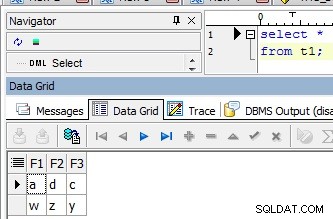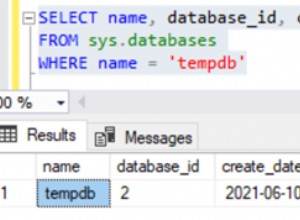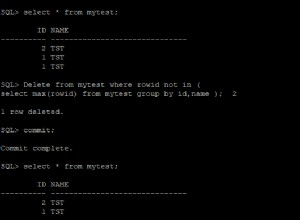Określ kolumnę, którą chcesz pominąć, jako FILLER. Należy pamiętać, że kolejność kolumn w pliku kontrolnym jest zazwyczaj kolejnością w pliku danych. Jeśli nazwa pasuje do kolumny w tabeli, właśnie tam trafi.
...
(
f1 CHAR, -- 1st field in the file, goes to column named f1 in the table
X FILLER, -- 2nd field in the file, ignored
f3 CHAR, -- 3rd field in the file, goes to column named f3 in the table
f2 CHAR -- 4th field in the file, goes to column named f2 in the table
)
Innymi słowy, kolejność kolumn w pliku kontrolnym odpowiada kolejności w pliku danych, a nie kolejności w tabeli. To odpowiada nazwie, a nie kolejności.
EDYCJA - dodałem kilka komentarzy w celu wyjaśnienia, ale uważam, że nie mogą one znajdować się w tej pozycji w rzeczywistym pliku. Zobacz poniżej pełny przykład:
Utwórz tabelę:
CREATE TABLE T1
(
F1 VARCHAR2(50 BYTE),
F2 VARCHAR2(50 BYTE),
F3 VARCHAR2(50 BYTE)
);
Plik kontrolny, example.ctl:
load data
infile *
truncate
into table t1
fields terminated by '|' trailing nullcols
(
f1 CHAR,
x FILLER,
f3 CHAR,
f2 CHAR
)
BEGINDATA
a|b|c|d
w|x|y|z
Uruchom to:
C:\temp>sqlldr userid=login/[email protected] control=example.ctl
SQL*Loader: Release 11.2.0.1.0 - Production on Wed Apr 22 11:25:49 2015
Copyright (c) 1982, 2009, Oracle and/or its affiliates. All rights reserved.
Commit point reached - logical record count 2
Wybierz z tabeli:

Mam nadzieję, że to pomoże.




